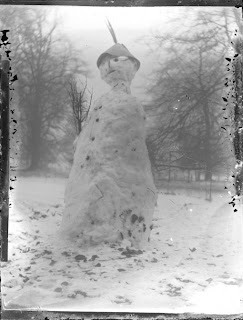Where We Eat photo assignment
1) Read the short essay.
Breaking Bread Everywhere, Plentifully or Pitifully
Imagine gathering all the food you plan to eat today. Now take a picture of it.
In an unusual project, Peter Menzel and Faith D’Alusio, a photographer and writer, traveled the world collecting photos and stories about what people eat in a day. They documented the meager meals of a Masai goat herder during a drought, the fast-food diet of an American long-haul trucker and a veritable feast of lamb kebabs and other foods set out by an Iranian bread baker.
The photos, first compiled in the book “What I Eat: Around the World in 80 Diets,” have been selected for an unusual exhibit at the Museum of Science in Boston. The result is an anthropological exploration of the culture of eating that is by turns mouthwatering, repulsive and surprising.
A mountain farmer in Ecuador offers tantalizing cheese empanadas along with roasted potatoes, barley soup and plantains. Meanwhile, a 21-year-old Mall of America worker in Minnesota is photographed with chicken fries from Burger King, tacos from Taco Bell and large cups of Dr Pepper and Mountain Dew.
Flanked by a herd of sheep, a fit-looking Spanish shepherd poses with his dog near a table filled with cans of beer, which he drinks with breakfast and dinner, as well as lamb, cured pork belly, fish and fruit. Several bottles of water and Gatorade dominate the photograph of a 20-year-old American soldier headed to Iraq.
“It isn’t so much to point out problems as it is to open eyes,” Ms. D’Alusio said. “We’ve been focused on food for a while because everybody has to eat. It’s a common denominator.”
David Rabkin, director of current science and technology at the Museum of Science, said the photo exhibit had been a hit with visitors and would continue at least through early next year.
“Food is a hot topic — people are interested in it and its many dimensions, from its health impact, to the experience of great food, to the bigger picture of our global food system and issues of social justice,” Mr. Rabkin said in an e-mail. “Food is personal. It’s a great topic for our museum because it’s so compelling to so many of our visitors and so rich in terms of the educational directions in which we can go with them.”
Each photograph is accompanied by a calorie count of the food displayed, but the authors warn that it’s not necessarily representative of the person’s average daily consumption. Still, the pictures do give a glimpse into how both hunger and excess coexist on the planet. The listed calories range from 800 to 12,300, beginning with a gaunt Kenyan herder and ending with an overweight British woman who claims to regularly binge on junk food.
Marion Nestle, a professor of nutrition, food studies and public health at New York University, who wrote the book’s foreword, said the photographs were only a snapshot of how individuals from different cultures choose to eat. As a result, she notes, the reader can’t draw broad conclusions about the diet of the individual or culture pictured, but the photographs are still revealing.
“In some places the food looks extremely familiar, and other places it doesn’t,” Dr. Nestle said. “Clearly, everybody does not eat like us. There’s a college student in China eating Kentucky Fried Chicken, and there she is looking quite proud about it. It does make you worry about the influx of American fast food into these cultures, yet there seems to be much holding on to the traditional foods.”
Mr. Menzel and Ms. D’Alusio had documented food habits in two previous books. “Hungry Planet: What the World Eats” is made up of photographs of the weekly food purchases of families around the world. “Man Eating Bugs” documents entomophagy, the eating of insects, still common in parts of Asia, Africa and Latin America.
Another project, “Material World,” has photographs of families with all of their belongings, highlighting their most precious possession. “We present information to people rather than drawing conclusions,” Mr. Menzel said. “We’re trying to educate readers by show and tell.”
2) Your class assignment: this is due by midnight
Objective: to understand what ordinary details of our daily lives say about who we are, where we’re from and what we care about?
a) On a word document list 10 things you remember eating yesterday.
b) Next, respond to the following:
1) What do you think these lists say about who you are, where you live and what you care about? 2) If, one hundred years from now, a historian or anthropologist was to come upon your lists, what might he or she conclude about you, your life and where you’re from? What questions might he or she have?
1) What do you think these lists say about who you are, where you live and what you care about? 2) If, one hundred years from now, a historian or anthropologist was to come upon your lists, what might he or she conclude about you, your life and where you’re from? What questions might he or she have?
c) Now write out a personal response to the following. These should be sent along.
- What photographs interested or surprised you most? Why?
- What questions did those photos raise for you?
- What can these photos tell you about the lives of the people pictured?
- What do you think they can’t tell you?
- What does the photographer for the food series, Peter Menzel, mean when he says, “We present information to people rather than drawing conclusions … we’re trying to educate readers by show and tell”? How does this apply to these photos?
3.
7
11


































